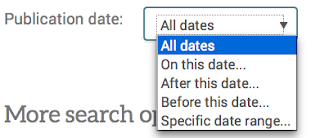In my previous blog post about the recently released movie The Walk, I used several databases to retrieve information about the infamous protagonist of that movie, Philippe Petit. I enjoyed finding out what books he has authored and what others have written about him, but his story really came to life when I realized that I could easily retrieve information from the Library’s subscription to the New York Times Historical database. Using this database, I was able to see the front page of the New York Times as it appeared on August 8, 1974, the day after his high wire-walk between the two towers of the World Trade Center.
As we all know, access to the New York Times online is limited by whether or not we are subscribers. Without a subscription, we can only access a certain number of articles per month for free. Additionally, free access goes back only as far as 1987. Some articles are available for free between 1851-1922 while articles between 1923-1986 are available for purchase.
Here at Stevens, the Library subscribes to the daily print version of the New York Times (you can request it at the Circulation Desk). For research purposes, however, you may find that electronic access is preferable due to the ease of the search capabilities that are embedded in its design. We have access to the current daily New York Times electronically via two databases, LexisNexis and ProQuest. Our subscription to New York Times Historical within ProQuest allows us to view the paper as far back as 1851.
Stop and think about that for a moment! We can literally look back in time using New York Times Historical. Scholars usually utilize a combination of primary, secondary, and tertiary sources when conducting research. Depending on the context of the research, newspapers may be considered either primary or secondary resources. An article about the Civil Rights Movement could be considered a primary source if it was written during the Movement itself, or a secondary source if it was written more recently with a more analytical or interpretive angle. For an excellent summary of the differences between primary, secondary, and tertiary sources, see this useful website from Ithaca College Library. For an excellent overview of the ways in which newspapers can be used for historical research, please see “Newspapers”, by Anne Rubenstein (York University), published on the website of the Center for History and New Media at George Mason University.
When you are feeling inspired to research the people, events and ideas that you’re learning about in class, have read about, or seen depicted in movies, open up New York Times Historical, available in our Databases A-Z list (you’ll need to log in via myStevens if you are off-campus).
Once you have the database open, you have a variety of options in which to construct your search. As with all databases, there are some useful tips that can help as you start to locate information:
Keyword searching
Brainstorm a variety of keywords related to your search. Include synonyms and remember that the terms that we use now may not have been used during the time they occurred (e.g. World War I). Review other keywords, phrases and any other important information that appears in the article. Add them to a working list of terms that you can use to further expand or narrow your search.
Phrase searching
Put phrases in quotes to ensure you find the terms together in the document (e.g. “Hillary Clinton”, “Stevens Institute of Technology”, “artificial intelligence”)
Boolean searching
Boolean operators (AND OR NOT) are built in to the advanced search mode of New York Times Historical. Use these terms to connect your search terms rather than searching a long string of words (e.g. “Bill Gates AND philanthropy”, “mechanical engineering” OR “electrical engineering”, apple NOT fruit)
Wildcard searching
Brainstorm all the iterations of your keywords and search terms. Use wildcards to search all terms at once (e.g. psycholog* searches psychology, psychologist, psychologists, psychological).
Most databases offer simple ways to refine or limit your searches so it’s also useful to review the options available in New York Times Historical:
Screenshot from New York Times Historical database (ProQuest)
Advanced Search (add rows and use Boolean operators as needed to refine or narrow your search):
Screenshot from New York Times Historical database (ProQuest)
Screenshot from New York Times Historical database (ProQuest)
Below are some screenshots of articles and images about notable events that are available via New York Times Historical:
An article about the Beatles published January 4, 1964, the day after their first appearance on American television:
An article published the day after Dr. Martin Luther King Jr. was assassinated:
Screenshot from New York Times Historical database (ProQuest)
An excerpt of an editorial article published April 15, 1865, the day after President Abraham Lincoln was assassinated:
Screenshot from New York Times Historical database (ProQuest)
The wealth of information about our world that is available through New York Times Historical is staggering. I hope that this short piece about one of our unique databases has inspired you to visit the New York Times Historical database to investigate the person or subject of your choosing! What will you look up?







No comments:
Post a Comment